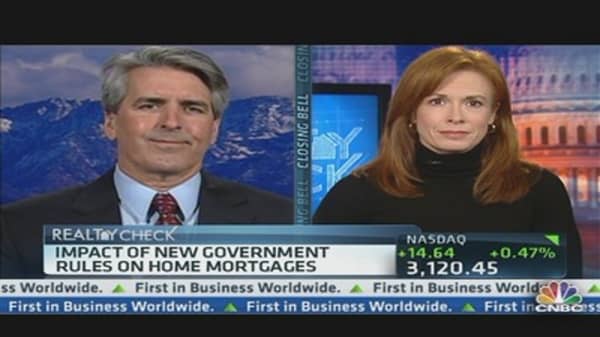What's truly new about the CFPB's rules is not that lenders must consider a customer's ability to repay. It's that lenders must now substitute the decisions of the CFPB for their own judgment about whether a borrower can repay the loan.
More specifically, the CFPB has declared that a lender must review the following eight factors before it makes a loan: (1) current or reasonably expected income or assets; (2) current employment status; (3) the monthly payment on the mortgage; (4) the monthly payment on any simultaneous loan; (5) the monthly payment for mortgage-related obligations; (6) current debt obligations, alimony, and child support; (7) the monthly debt-to-income ratio or residual income; and (8) credit history. Lenders have to verify all this with information from independent third parties.
Gone are the days of no-doc or low-doc loans. Also gone are the days when a lender could make a loan counting on its being repaid with a refinancing before its initial teaser rate or interest only period runs out. For loans with variable rates, lenders will have to assess a customer's ability to repay both principal and interest over the long term.
The 2010 Dodd-Frank reforms allow lenders to be sued for making loans that a customer cannot repay. This isn't something that lenders want anyway, of course. But the effect of the law was to create potential legal liability for lenders when a borrower defaulted. It invited judges to second-guess the terms of a deal made between a borrower and a lender.
The CFPB's new rules create a safe-harbor for those loans that meet its criteria for a "qualified mortgage." There cannot be upfront fees or points in excess of 3 percent of the loan. The Qualified Mortgages cannot exceed 30 years or include interest-only periods. No negative amortization or ballooning principal. The debt-to-income ratio of the borrower must be equal to or less than 43 percent. The loan must be a prime loan, which means its interest rate cannot very too far from the national average prime mortgage rate. If a loan meets these criteria, lenders won't have to fear a lawsuit from the borrower.
Higher priced loans that otherwise meet the criteria do not enjoy total immunity from liability. But lenders of those almost-qualified loans will enjoy a "rebuttable presumption" that the terms of the loan are fair. Which means that a borrower would have to prove that the lender failed to, say, consider his or her income when making the loan.
The rules also provide for another escape hatch for lender liability. If a loan is eligible to be sold to Fannie Mae or Freddie Mac, it will count as a Qualified Mortgage. This means that if Fannie or Freddie adopt purchasing guidelines looser than the CFPB's definition of a Qualified Mortgage, lenders will be able to make mortgages on those looser terms without fear of legal liability. It also means that the pressure that will be brought to bear on Fannie and Freddie to adopt looser guidelines can be expected to increase immensely. This provision is supposed to sunset in seven years or when Fannie and Freddie are no longer under governor conservatorship.
The practical effect of this will be that almost all mortgages from traditional lenders will be Qualified Mortgages or almost qualified higher priced loans. Few traditional home lenders will want to invite the legal liability that accompanies taking a different point of view from the CFPB's declaration of who has the ability to repay a loan. The influence of Fannie and Freddie over the market will grow. The home loan market will be much less diverse than it might have been otherwise.
One ironic effect of the Qualified Mortgage rule is likely to be the birth of a new type of lender specializing in loans that fall outside the safe harbor. These loans will still have to be made with an eye toward the eight tests for a customer's ability to repay. But a lender who can fairly say that a borrower with a 44 percent debt to income ratio likely has the ability to pay his loan could do a good business.
The biggest risk here is that the costs of error multiply with homogenization. Instead of various lenders with different opinions about what qualifies a borrower, all lenders will very likely be making similar loans. If these loans wind up being riskier than expected, the losses will be widespread. And although the CFPB's rules seem tight now, the Fannie-Freddie escape hatch allows for backdoor loosening.





